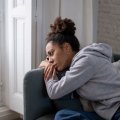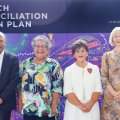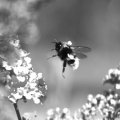UQ undergraduate accesses NASA test aeroplane for her research
Mechanical Engineering Department honours student Amanda Robbins was walking on air with the news she would be conducting part of her research at NASA facilities.
Ms Robbins recently spent three weeks working at NASA's White Sands Test Facility in Las Cruces, New Mexico, and the NASA Johnson Space Centre in Houston, Texas, for her thesis project on gravity's effect on fluids.
Experiments conducted under reduced gravity conditions allow greater scrutiny of other, more subtle effects on liquid streams such as surface tension.
"A knowledge of the behaviour of fluids as they break up into droplets is vital for improving the production of materials involving small particles including fertilisers and explosives and in the powder-drying of foods," Ms Robbins said.
"In fertiliser production, manufacturers continue to strive for a process yielding uniform particle size to reduce the chances of end-users such as farmers inhaling smaller, dust-sized particles when they open bags.
"In explosive production, the more uniform the particle size, the more predictable and reliable the explosion."
The tests represent the first time experiments in the field have been conducted over longer durations of reduced or microgravity (between 15 and 25 seconds). These conditions are achieved by placing a test box inside NASA's specially modified "Weightless Wonder V" aeroplane.
Twenty-five seconds of weightlessness are achieved as the plane suddenly drops from 35,000 feet to 15,000 feet. Returning to its initial altitude each time, it completes this rapid descent 40 times in two hours over the Gulf of Mexico.
"In the past, these experiments have only been conducted using ground-based drop towers capable of producing microgravity (reduced gravity) for a maximum of 2.2 seconds," Ms Robbins said.
Supervised by Department senior lecturer Dr Ted Steinberg and funded by a 1998 Australian Research Council small grant of $25,000, the project is believed to be the first University of Queensland undergraduate work to have access to the $75,000-a-week plane.
"I was granted space on the flight due to Dr Steinberg's longstanding NASA connections formed through his ongoing microgravity combustion experiments. While I won't be travelling on the plane this trip, there is a possibility I will get on board next time around," Ms Robbins said.
For more information, contact Amanda Robbins (telephone 07 3365 4179).



